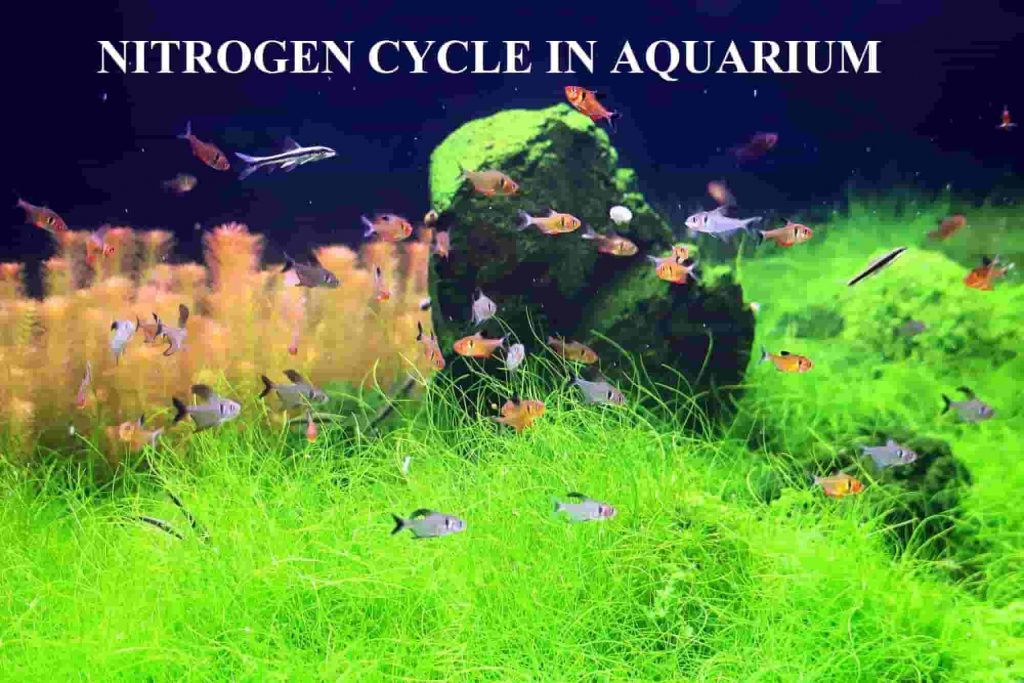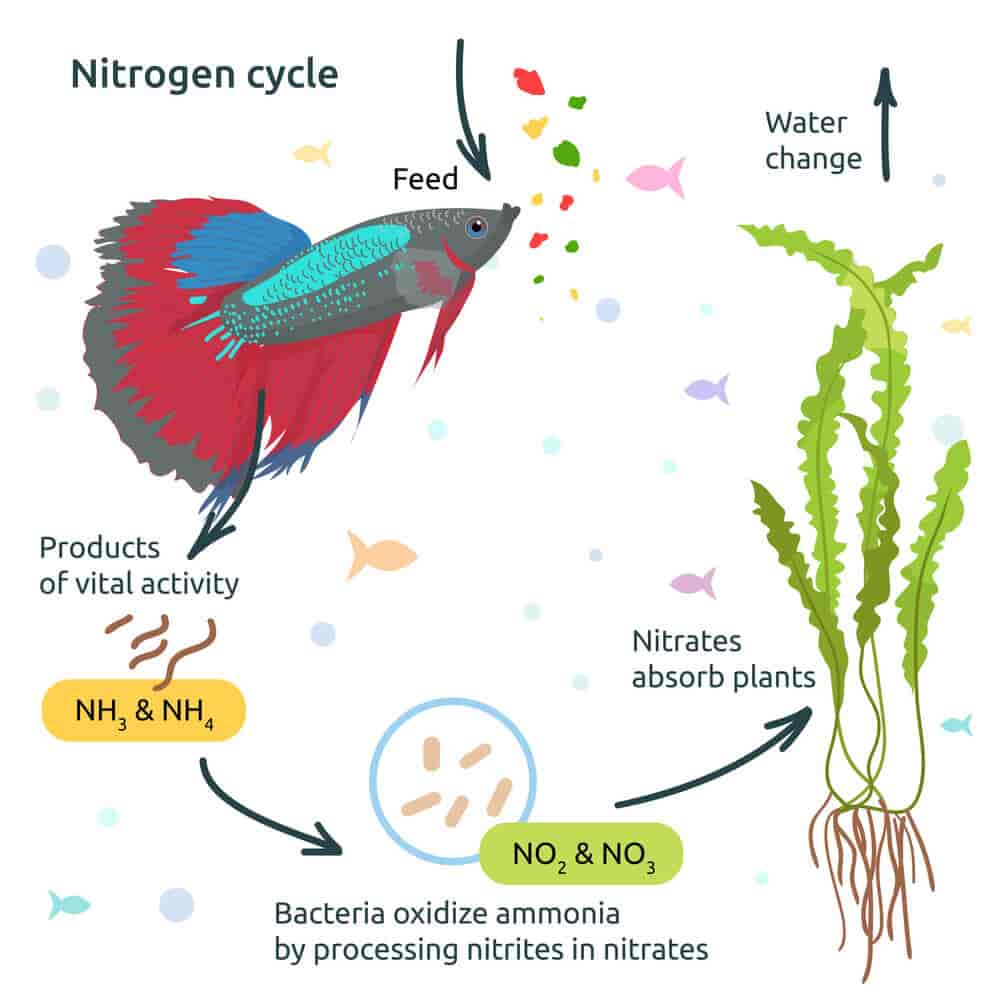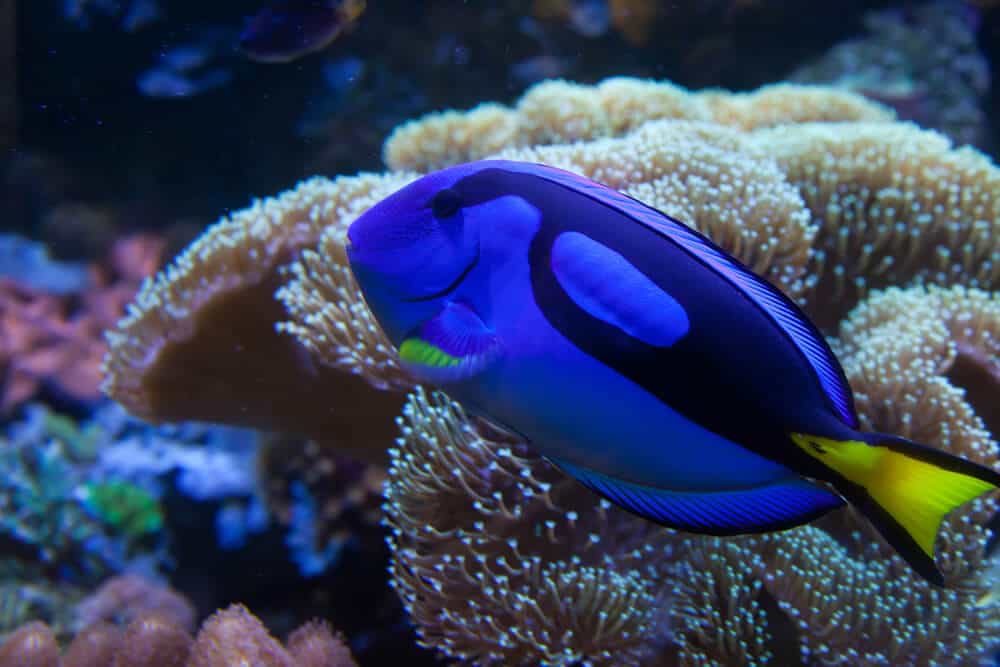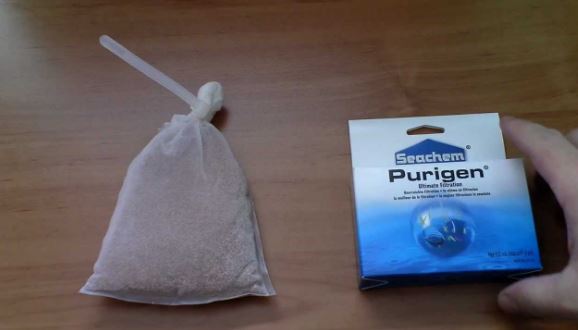
Contents
1. A Simple Guide for Beginners
If you own an aquarium, then the nitrogen cycle is something you can’t ignore. It’s one of the most important things to understand if you want to have a healthy tank.
What is a nitrogen cycle? The nitrogen cycle is also called the biological cycle. That’s because it’s how good bacteria in your tank get rid of some of the waste in your tank. Fish waste creates ammonia, which gets turned into nitrite and then into nitrate.

Still confused? Don’t worry. In this simple guide for beginners, we’ll help you understand everything about the nitrogen cycle.
2. Understanding the Nitrogen Cycle
To begin with, you need to know why the nitrogen cycle is so important for your tank. We’ll also talk about how long it lasts so you know what to expect.
Why Your Aquarium’s Nitrogen Cycle is Important
In the next subsection, we’ll talk about the different stages of the nitrogen cycle and how long the whole process takes. But first, you need to know why it’s so important.
Remember how we said the nitrogen cycle turns ammonia into nitrite and then into nitrate? That’s exactly why.
There’s lots of waste in your aquarium. Fish poop, extra food, dead pieces of plants and algae, dirty filter media, and even fish breath. These are all biological materials.
When they start to decay, they form ammonia. Ammonia is toxic to your fish and can make them sick. They may even die.
In your biological filter, there are lots of bacteria. One type is called Nitrosomonas. These bacteria feed on ammonia. They then create nitrites.
The problem with nitrites is that they can also make your fish sick and die. Nitrites are very toxic to fish.
But there’s also some good news.
Nitrobacter is another type of bacteria that grows in your biological filter. As part of the nitrogen cycle, Nitrobacter feeds on nitrites and turns them into nitrates.
Nitrates are fish-friendly. However, too many nitrates can also be a bad thing. That’s one of the reasons you need to change your aquarium water every once in a while. Doing so will help to lower the nitrate levels in your tank.
How Long Your Nitrogen Cycle Lasts
The nitrogen cycle has a few different stages. Let’s take a look at what they are:
- You feed your fish. Any food that doesn’t get eaten becomes waste.
- After your fish eat, they create solid waste when they poop.
- If you have any plants or algae in your tank, dead pieces stay in the water. This is more waste.
- All that waste builds up in your tanks. When it starts decaying, the waste creates ammonia.
- Bacteria in your biological filter turn the ammonia into nitrite.
- Different bacteria turn the nitrite into nitrate.
- The plants in your tank use some of the nitrates to grow. This helps to remove some of the nitrates, but not all.
- Your nitrate levels grow over time and you change the water.
That’s a very simple way of understanding the nitrogen cycle. Obviously, more waste is being added all the time. The process of turning ammonia into nitrite and then nitrate isn’t instant. And you shouldn’t be changing your aquarium water every time you feed your fish!
It can take anywhere from 2 weeks to 2 months for your nitrogen cycle to complete. But that doesn’t mean you don’t have to be careful the whole time.
You should do a test every few days. When you notice that the nitrate levels are getting close to 20ppm (parts per million), it’s time to do a small water change. That’s because nitrates become toxic to fish at this point.
As a general rule, you should only change 20% to 50% of your tank water at a time. Do this once every 1 to 4 weeks while regularly testing your water.
3. Nitrogen Cycle Advice
Okay, so now you know what the nitrogen cycle is! But you’re probably still confused about how to get it started and what to do if it’s very slow.
That’s what we’re going to help you with here.
How to Start the Nitrogen Cycle in Your Tank
You have two options for starting the nitrogen cycle in a new tank: with fish and without fish. Let’s take a look at both.
Option 1: With Fish
We need to start by saying that this is not the best option.
There will be a lot of ammonia and nitrite in your aquarium, so your fish are going to be under a lot of stress. Depending on what type of fish they are, most of them might die.
But if you already put fish in your tank on the first day, this is your only option. Hopefully, you have the type of fish that can handle lots of ammonia and nitrites. Here’s a list of them:
- Banded Gourmis
- Cherry or Tiger Barbs
- Most guppies
- Most minnows
- Pseudotrophius Zebra
- Pupfish
- White Clouds
- Z-Ray Tetras
- Zebra Danios
You should also only feed your fish once every two days until your cycle starts. Test the water regularly using your test kit and change 10% to 25% of the tank water every 2 to 3 days.
Once your nitrogen cycle has started, you can start adding more fish. Do this slowly, one or two fish at a time only.
Option 2: Without Fish
This is the best way to start your nitrogen cycle. It doesn’t put any fish in danger of getting sick or dying.
The easiest way is to put all your filters, decor, and plants into your tank. Don’t forget your de-chlorinator too! Keep the temperature at around 77°F to 86°F (25°C to 30°C) so bacteria can start to grow and put your filters on. Then put some fish food into the aquarium so it can rot and start creating ammonia.
A much better way is to use a cycling product as your ammonia and nitrifying bacteria resource. You need to keep the ammonia levels in your tank at about 3 to 4ppm using your test kit. Test every other day and add more ammonia source if your levels drop.
After about a week, start testing for nitrite too. Keep adding more fish food and cycling product so the levels stay at 3 to 4ppm. After a few weeks, you’ll see that the nitrite levels are also dropping. That means your bacteria are turning them into nitrates.
At this point, you can stop adding ammonia. Remember to still do a 10% to 25% water change once a week so you don’t have too much nitrate.
When you have no more ammonia and nitrite, and your nitrate levels are about 20ppm, congratulations! Your nitrogen cycle is complete.
You can now safely add your fish.
See also: How to Boost up Your Tank’s Nitrogen Cycle (Simple Guide for The Beginners)
4. Related Questions
Now you know almost everything there is to know about the nitrogen cycle. But of course, you might have some more questions.
That’s why we like to close off with a few answers.
What Happens if There’s Too Much Ammonia in My Tank?
Ammonia poisoning is a very serious threat to your fish. That’s why you need to perform regular kit tests on your tank. You can recognize ammonia poisoning in your fish with these symptoms:
- Fish gasping for air at the surface
- Little or no appetite
- Inflammation of the anus, eyes, or gills
- Red streaks on your fish’s fins
- Slow movement or not moving much
- Staying near the bottom of the tank
If you recognize any of these symptoms or notice your ammonia levels are high when testing, you need to act fast. Change more water than you usually do and change it more often.
What Should I Do if My Fishless Aquarium’s Ammonia Levels Won’t Drop?
There are only 3 reasons a fishless tank’s ammonia levels aren’t dropping:
- pH levels are too low
- There’s chlorine in the water
- You’ve been cleaning too often
Your pH level should be at least 7. Otherwise, ammonia becomes ammonium. The bacteria that turns ammonia into nitrite can’t feed on ammonium. Using a pH kit, you can increase the pH level in your aquarium.
Chlorine kills bacteria. So you need to make sure that you’re de-chlorinating your water before putting it into your tank.
If you’re cleaning your tank too often, you’re removing the bacteria from your rocks, gravel, filter media, and decorations. So if your pH level is good and there’s no chlorine in your tank, stop cleaning it for a little longer.
These same steps should be used if you find your nitrite or nitrate levels aren’t rising properly.
What Do I Do if My Aquarium’s Nitrogen Cycle Won’t Start?
By day 3, you should start seeing ammonia in your tank when you do tests. Make sure your test kit isn’t faulty first, but if there’s still nothing by day 5, your tank isn’t cycling.
Either there isn’t enough waste or starter product, or there are too many plants. Add some more fish flakes or cycling product. Keep trying and take some plants out if there’s still nothing.
How Do I Deal with an Algae Bloom?
Starting the first nitrogen cycle in your aquarium makes it ideal for algae. A little bit is okay – they’ll help ammonia levels rise. But too much is never a good thing.
The first thing you should do is switch your tank light off. Your plants need the light, so let them have some for a maximum of 10 hours a day. Daylight will be fine. But outside of that, your light should be off.
A CO2 injector can also help. Make sure you’re not over-fertilizing your tank either and you should see algae levels drop.
As tempting as it is, don’t do a deep clean just because of algae. You’ll have to start the cycling process from scratch if you do.
5. Conclusion
Something to remember is that the nitrogen cycle never ends. It repeats itself from the first day to the last.
That’s a good thing. Your aquarium needs its nitrogen cycle to stay healthy.
But the journey is just beginning. You need to properly maintain your biological filter media. And there’re something called new tank syndrome and old tank syndrome that you need to be careful of. We’ll leave that for a new post, though.






